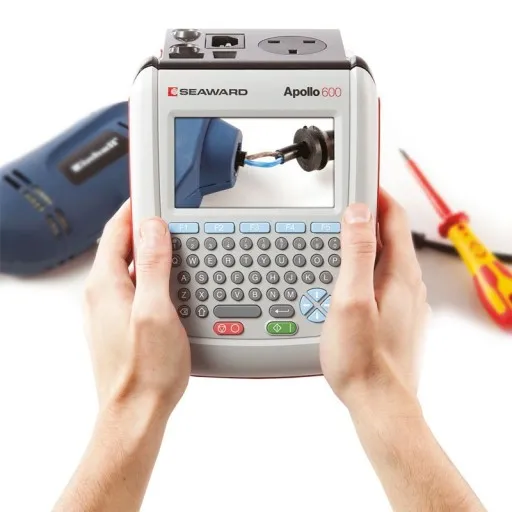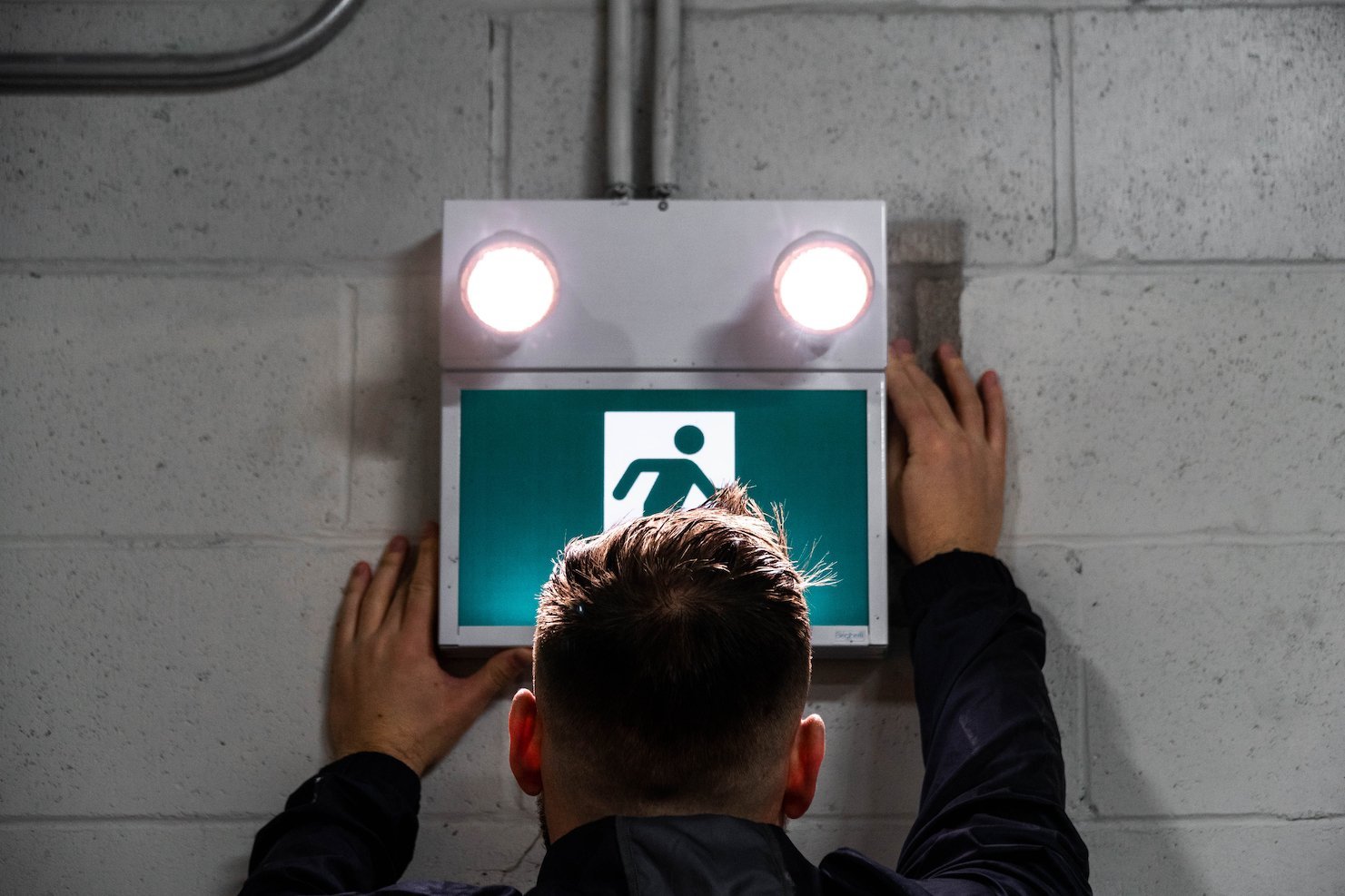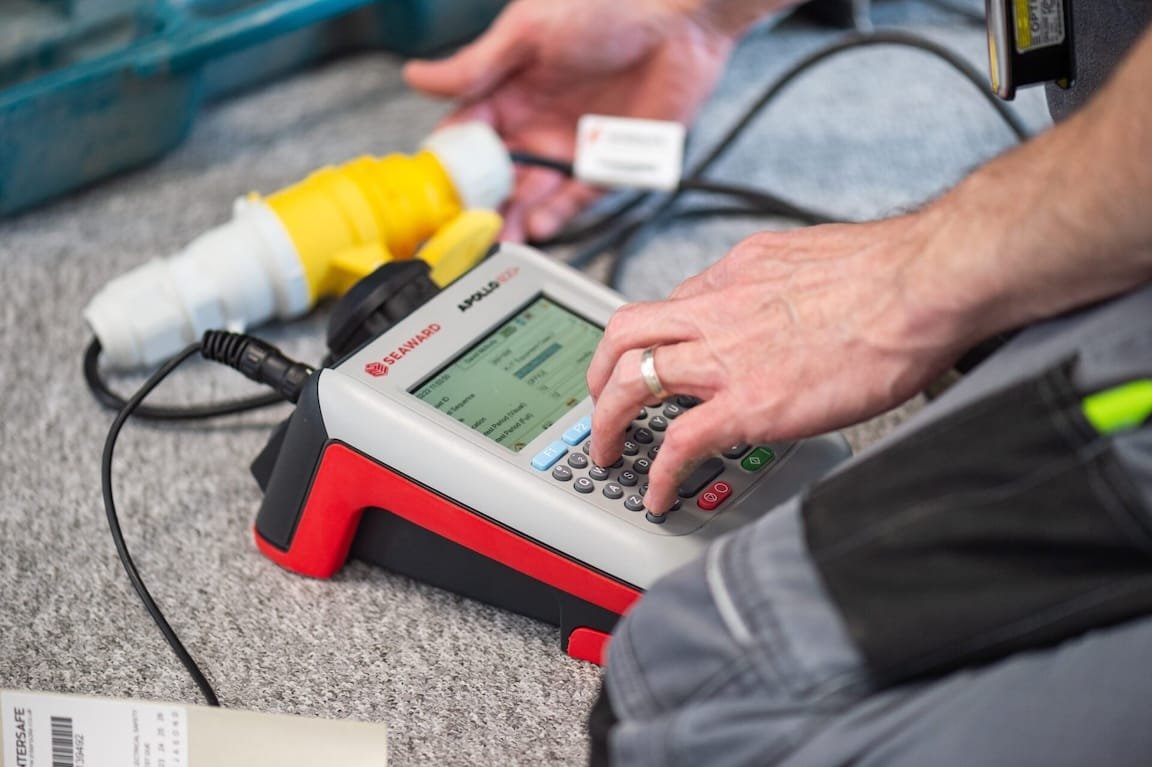
The Essential Guide to PAT Testing for Landlords
Portable Appliance Testing (PAT) for Landlords & HMOs
In today's digital age, ensuring the safety of electrical appliances is more crucial than ever. Whether you're a seasoned landlord or just starting, understanding the significance of PAT Testing is imperative. This guide dives deep into the essentials of Portable Appliance Testing (PAT Testing) tailored for landlords, emphasizing its significance, especially for those with HMO properties.
What is PAT Testing?
PAT Testing, is a process through which an electrical appliance is routinely checked for safety. It's a visual inspection of equipment and electrical safety test using specialised test equipment to ensure the portable appliances are safe for use. This is different from your fixed electrical installations electrical inspections (eicr inspection) carried out every 5 years.
Why is PAT Testing Electrical Appliances Crucial For Landlords?
Safety First: A PAT Test ensures that all electrical equipment provided by the landlord in the rental property is safe for tenant use. Regular tests minimize the risk of electrical fires or accidents.
Legal Responsibility: While PAT Testing isn't a legal requirement in all regions, it's a landlord's responsibility to ensure electrical equipment is safe. Any harm caused due to faulty appliances could result in legal repercussions. Just because its not a legal requirement for landlords, the local council may insist your rental property is PAT Tested by a professional pat test company. Tenants are responsible for making sure that their own electrical appliances are safe.
Insurance Requirements: Some insurance providers mandate regular PAT Tests. Ensuring appliances pass these tests can help landlords avoid potential claims.
HMO PAT Testing: The Added Layer of Electrical Safety & Responsibility
HMO (Houses in Multiple Occupation) refers to properties rented out by at least three people who aren't from one household but share facilities. If you're a landlord of an HMO, the electrical safety standards increase.
Increased Usage: With more tenants, electrical equipment in HMOs are used more frequently, leading to faster wear and tear. Regular PAT Testing for HMOs helps in early detection of potential issues with the electrical equipment.
Licensing Requirements: Some local councils may require HMO properties to undergo PAT Testing as a condition of their HMO license.
Landlord PAT Testing: Best Practices
Frequency: While there isn't a strict rule, annually checking appliances, especially in HMOs, is recommended.
Record Keeping: Maintain a log of all PAT Tests. This serves as proof that you've done your due diligence as a landlord.
Hire Professionals: Always ensure PAT Testing is done by competent professionals. They'll have the requisite knowledge and equipment to ensure accurate tests.
Ask Advice From Your Letting Agent
Navigating the intricacies of health and safety, especially in the realm of property management and HMOs, can be challenging. Your property agent can be an invaluable resource in this context. Here's how and why you should seek their counsel:
1. Experience Matters:
Most property agents have seen it all – from new landlords just starting out to seasoned landlords managing a standard rental property to multiple HMO properties. Their accumulated experience makes them well-positioned to provide insights on how to approach PAT Testing and what pitfalls to avoid.
2. Understanding Regional Nuances & The Local Authority:
Laws and regulations regarding Portable Appliance Testing can vary by region and local authority, and your agent is likely familiar with the local requirements. Whether it's about frequency, documentation, or nuances in regulations, they can guide you accurately.
3. Trusted Contacts and Recommendations:
Your agent might have contacts with qualified local PAT Testing professionals or companies. Leveraging these connections can ensure you get quality service without the hassle of searching for a reliable provider.
Final Thoughts
Landlord PAT Testing isn't just about fulfilling a responsibility; it's about ensuring the safety of your tenants and the longevity of your property. Stay ahead of potential issues and embrace the practice of regular Portable Appliance Testing, especially if you're venturing into the HMO property market.
FAQs: PAT Testing for Rental Properties & HMOs
Q: What appliances should landlords PAT Test in a property?
A: All portable electrical appliances (Any electrical item with a plug) that you supply tenants with should be PAT Tested. This includes but isn't limited to kettles, toasters, microwaves, washing machines, refrigerators, vacuum cleaners, lamps, and portable heaters.
Q: How often should a landlord conduct PAT Testing?
A: While there's no fixed rule, it's recommended to test appliances on a yearly basis. For appliances that endure more wear and tear, such as in HMOs, landlords may consider more frequent checks.
Q: Is PAT Testing a legal requirement for landlords?
A: While a PAT Test itself might not be a legal requirement everywhere, landlords are legally obligated to ensure the electrical items they supply are safe. The local government, insurance company or letting agents you use might have stricter requirements for regular PAT Testing.
Q: How long does a PAT Test take?
A: The duration varies based on the number of appliances and their conditions. On average, testing an appliance can take around 5 minutes, but for a full property, it can range from 1 to 3 hours.
Q: How can landlords ensure the PAT Testing is reliable?
A: Always hire a competent professional, qualified person or company certified in PAT Testing. Ask for their qualifications, and, if possible, seek out reviews or testimonials from other landlords.
Q: What happens if an appliance fails the PAT Test?
A: If an appliance fails, it should be repaired or replaced before being used again. Landlords should not provide faulty equipment to tenants. Always rectify the fault or replace the appliance to ensure tenant safety.
EICR Inspections: What are they and how do they differ from Portable Appliance Testing?
Electrical Installation Condition Report (EICR) is another pivotal inspection that landlords must familiarize themselves with. While both Portable Appliance Testing and EICR assessments aim to ensure electrical safety, they target different areas and have distinct procedures.
Understanding EICR Inspections:
EICR is a thorough inspection and testing of the fixed electrical installations within a property carried out by a qualified electrical engineer/qualified electrician. This includes the wiring, sockets, consumer units (fuse boxes), and other fixed electrical components.
How EICR differs from Portable Appliance Testing:
Scope: While PAT Testing focuses on portable appliances like kettles, microwaves, and washing machines, EICR targets the fixed electrical installation in the property.
Frequency: EICR inspections are generally required every 5 years for rental properties, whereas PAT Testing is often recommended annually, especially for frequently used appliances.
Testing a legal requirement: In many places, it's mandatory for landlords to have an up-to-date EICR, especially before letting out a property. PAT Testing, though essential, might not have the same legal binding everywhere and would depend on the local council where the rental property is located.
How is a PAT Test Carried Out?
Conducting a PAT Test involves a two-step approach, combining both visual inspections and instrumental checks.
Visual Inspection: Before diving into any technical tests, the examiner will visually inspect the appliance. They'll look for:
Damaged wires or cables.
Damaged plugs or equipment.
Signs of overheating or burn marks.
Correct fuse ratings.
Instrumental Inspection: Using specialized testing equipment, the tester will:
Check the insulation resistance to ensure the appliance is fully insulated and won’t cause a shock.
Test the earth continuity to make sure that the appliance is properly grounded.
For some appliances, a test on the functionality of the equipment will be carried out to ensure it's operating correctly.
Upon completion, the appliance will either be labelled as "passed" or "failed." Passed items are safe for use, whereas failed items need to be either repaired or replaced. You should also be sent a PAT test certificate.
Services We Provide
-

Portable Appliance Testing (PAT Testing)
We provide PAT testing, which is a process of regularly inspecting and testing electrical appliances to ensure their safety for use in various settings.
-

Fire Alarm Service & Maintenance
We provide fire alarm servicing & maintenance in buildings to ensure their proper functioning and prompt detection of any potential fire hazards.
-

Fire Extinguisher Service
Fire extinguisher servicing to ensure that they are in proper working order and capable of effectively extinguishing fires when needed.
-

Emergency Lighting Test & Maintenance
Emergency light testing is the inspection and testing of emergency lighting to ensure that they will be functioning in the event of an emergency.
-

Fire Risk Assessments
We carry out Fire risk assessments to identify potential fire hazards in your building and recommend appropriate measures to minimize the risk of fire.


